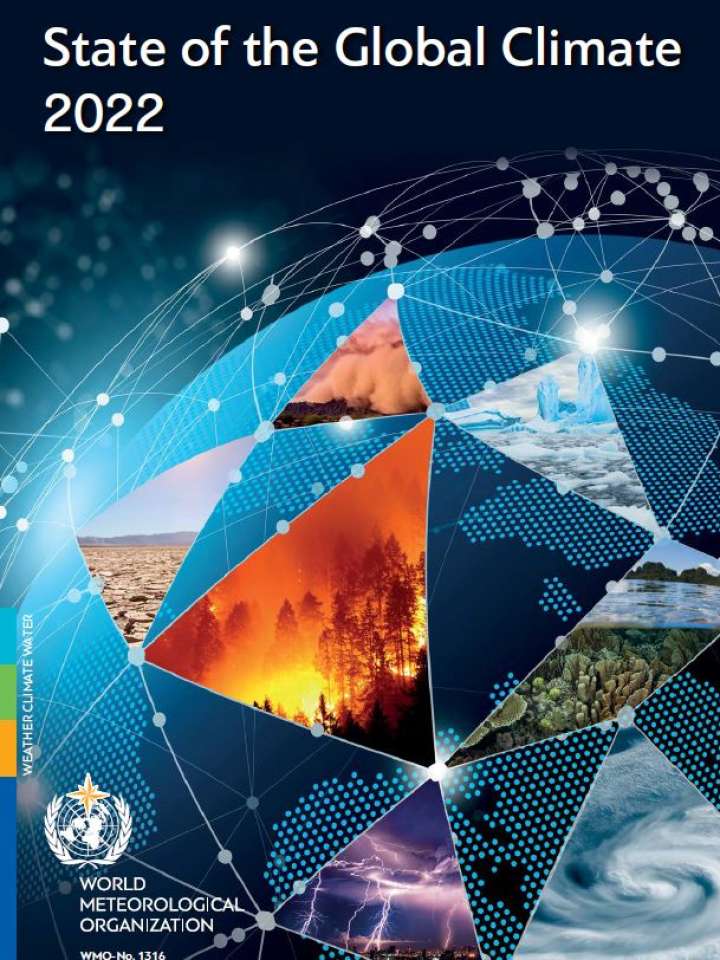State of the global climate 2022
The publication provides a summary on the state of the climate indicators in 2022 including global temperatures trends and its distribution around the globe; most recent finding on Green House Gases concentration, Ocean indicators; Cryosphere with a particular emphasis on Arctic and Antarctic sea ice, greenland ice sheet and glaciers and snow cover; Stratospheric Ozone; analysis of major drivers of inter-annual climate variability during the year including the El Niño Souther Oscillation and other Ocean and Atmshperic indices; global precipitation distribution over land; extreme events including those related to tropical cyclones and wind storms; flooding, drought and extreme heat and cold events. The publication also provides most recent finding on climate related risks and impacts including on food security, humanitarian and population displacement aspects and impact on ecosystems.
The report highlights specific socio-economic impacts. Rainfall has been below-average in five consecutive wet seasons, the longest such sequence in 40 years. As of January 2023, it was estimated that over 20 million people faced acute food insecurity across the region, under the effects of the drought and other shocks. Record breaking rain in July and August led to extensive flooding in Pakistan. There were over 1 700 deaths, and 33 million people were affected, while almost 8 million people were displaced. Total damage and economic losses were assessed at US$ 30 billion. July (181% above normal) and August (243% above normal) were each the wettest on record nationally. Record breaking heatwaves affected Europe during the summer. In some areas, extreme heat was coupled with exceptionally dry conditions. Excess deaths associated with the heat in Europe exceeded 15 000 in total across Spain, Germany, the UK, France, and Portugal.
Explore further
